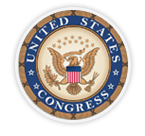Search
David's Latest Videos
David's Latest Tweets
Sign Up For E-Newsletters
 |
DODD FRANK: TWO YEARS ON, A NEW PATH FORWARD IS NEEDED
BY: REP. DAVID SCHWEIKERT
In Human Events
Two years ago today, on July 21, 2010, President Obama signed the Dodd-Frank Wall Street Reform and Consumer Financial Protection Act into law.
Two years later, Dodd-Frank and its 2,300 pages containing more than 400 new rules and mandates is little more than half promulgated, already requiring job-creators to dedicate 24,180,856 hours each year for compliance.
I have read Dodd-Frank cover to cover, yet I still can’t claim to fully comprehend its many intricacies. Its marketplace disturbances are endless.
For one, Dodd-Frank created the Consumer Financial Protection Bureau (CFPB), a new consumer advocate with untold powers enumerated nowhere but in the imagination of its current unconstitutionally appointed director and future successors.
Every day, we discover new powers the CFPB has determined to bestow unto itself – power over credit and debit cards, mortgages, student loans, and retail bank accounts to name but a few. All are accomplished at unappropriated spending levels outside the control of Congress.
The Volcker Rule as proposed would hamper the ability of banks to invest their own funds. The line between proprietary trading and market making is so ill-defined that Volcker could potentially preclude market makers from providing liquidity in the marketplace. What part of the housing crisis was caused by proprietary trading?
Risk retention is not a bad theory on its face, but qualified mortgage rules, which would exempt certain loans from securitization, contain limits so narrow they are overwhelmingly constraining. In addition, the classification of what constitutes a “qualified” product is months behind schedule and will drive buyers from any market if the mortgage in question doesn’t meet strict criteria. One can only imagine how much credit will dry up in the wake of this rule.
The list goes on and on.
Meanwhile, Dodd-Frank’s main unintended consequences can be summed up as time and money.
Business owners and job creators are investing their time in complying with these new burdensome regulations. And they’re spending money in a multitude of ways, the most obvious being their cost of compliance.
However, the overlooked expense for businesses is opportunity risk. Financial institutions are losing out on the opportunity to see returns because they are spending their money on compliance instead of loans. They are curtailing growth in an attempt to maintain high capital ratios. And worse yet they are frozen because of a lack of regulatory clarity. Sixty-one percent of 221 rulemaking deadlines have already been missed. Who can blame the private sector for its hesitancy?
The House Financial Services Committee, of which I am a member, has done a commendable job tracking and documenting the disarray that Dodd-Frank has caused.
Now, two years later, it is time for us to find a path forward. We have to consider Dodd-Frank a reality, and our conversations need to include concrete solutions in addition to incredulity. We must keep our focus on the future, not the past, and devise ways to cure the damaging effects of Dodd-Frank.
How do we ensure liquid markets in the face of curtailed money making activities? How do we ensure that firms can continue to be profitable centers of job creation when they are prohibited from participating in certain businesses or trading certain products? How do we guarantee credit availability in the housing, credit card, auto, and student loan marketplaces when risk retention rules drive lenders and securitizers away?
And, perhaps most importantly, how do we foster an overall environment of growth and prosperity in the face of overbearing oversight and regulation?
As we roll into our third year of living with Dodd-Frank, these are the questions that we need to be answering.
Today.

